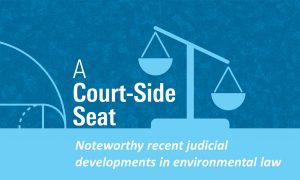On October 10, 2025, Governor Newsom signed SB 440, titled the Private Works Change Order Fair Payment Act. The new law introduces a process and deadlines for handling change order, time extension and payment disputes on private-works construction projects. SB 440 will apply to contracts entered into on or after January 1, 2026, and will remain in effect until January 1, 2030.
Articles Posted in Uncategorized
Incidental Beneficiaries, Assumed Contracts and a Lack of Cure
In “No Cutting the (Priority) Line!: Incidental Beneficiaries to Assumed Contracts and Leases Cannot Assert Cure Claims Against Debtors,” colleagues Dania Slim and Alana A. Lyman examine a recent Second Circuit decision that suggests incidental beneficiaries without legal rights under assumed contracts or leases may not assert cure claims.
The “Builder’s Remedy” Looms Over Bay Area Cities
Cities in the San Francisco Bay Area are frantically working to finalize their state-mandated “housing elements” in their General Plans by the January 31, 2023, deadline imposed by the California Department of Housing and Community Development (HCD). For Bay Area cities like San Francisco, Oakland, San Jose and Berkeley, the plans must be approved by HCD on or before January 31, 2023. California municipalities have extra incentive to get their housing elements approved this year, because the failure to meet the deadline may subject them to a remedy known as the “builder’s remedy.”
A Court-Side Seat: Clean Air, Clean Water, Citizen Suits and the Summer of 2022
This is a selection of significant environmental and regulatory law cases decided by the federal courts after the Supreme Court’s 2021 Term concluded.
Real Estate & Construction News Round-Up (08/24/22) – Local Law 97, Clean Energy, and IRA Tax Credits
This week’s round-up features the intersection of real estate and energy efficiency, including state efforts surrounding clean energy legislation, Inflation Reduction Act tax credits, hotel & hospitality sectors creating sustainable initiatives to reduce carbon emissions, and more.
Continue Reading ›
Supreme Court Issues Opinion in West Virginia v. EPA
The Supreme Court rejected EPA’s Obama-era Clean Power Plan in a decision that has significant implications both for future attempts by EPA to regulate CO2 emissions and for other agencies attempting to promulgate rules that implicate “major questions.” In “Supreme Court Issues Opinion in West Virginia v. EPA” Anne Idsal Austin, Shelby L. Dyl, Sheila McCafferty Harvey discuss the impact the decision will have on environmental policy.
Join Us for Bisnow’s National Landing Update: NoVa’s Newest Live, Work, Play Destination 03.22
Jamie Bobotek, Pillsbury partner, will be moderating during the “Redefining Live-Work-Play: A National Landing Development Outlook” panel at Bisnow’s National Landing Update: NoVa’s Newest Live, Work, Play Destination event on March 22. For more information and to register, please visit the event page.
Nuclear Trade and Project Development
For the OECD Nuclear Energy Agency‘s recently released Principles and Practice of International Nuclear Law, Pillsbury partner William E. Fork has joined with Akos Frank (NKT) to provide a lawyer’s view of nuclear project development in Chapter 6: Nuclear Trade and Project Development discussing new builds, project development and construction.
Real Estate & Construction News Round-Up 02/02/22
The Biden Administration announces the Building Performance Standards Coalition, commercial real estate sales in the metaverse topped $500 million in 2021, the New York eviction ban expires, and more. Continue Reading ›
The G2G Year in Review: 2021
With 2021 now behind us, we wanted to share our top five most-read articles of 2021 from Gravel2Gavel. The most-read blog posts covered real estate and construction industry trends ranging from Proptech, smart construction, COVID-eviction moratoriums, and blockchain tokenization.
Throughout the year, G2G posts provided deep industry insight and summarized hot topics addressing the legal implications and disruptions that affected the market, and we will continue to expand on these insights in 2022. Our 2021 roundup:
- Blockchain Innovations and Real Estate: NFTs, DeFis and dApps by Craig A. de Ridder
- Washington, DC’s COVID-19 Eviction Moratorium Expires by Amanda G. Halter and Adam J. Weaver
- Operating an Adult-Use Cannabis Business in New York: Licensing and Considerations for Landlords and Tenants by Caroline A. Harcourt, Brian H. Montgomery, and Adam J. Weaver
- Smart Construction and the Future of the Construction Industry by Caroline A. Harcourt and Adam J. Weaver
- Smart Technology in Commercial Real Estate by Rachel Newell
 Gravel2Gavel Construction & Real Estate Law Blog
Gravel2Gavel Construction & Real Estate Law Blog



